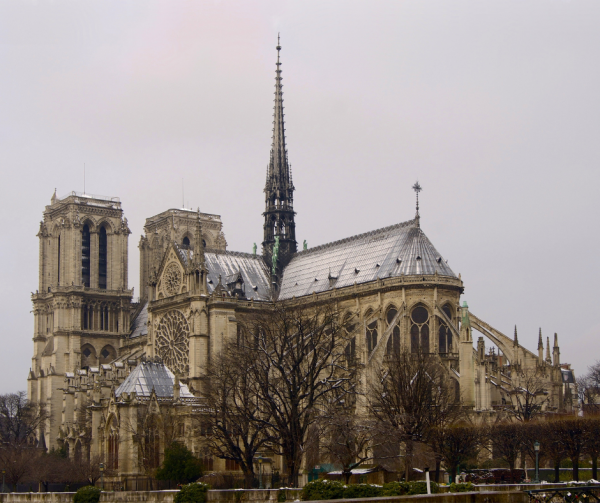The Law of Sanctuary

“Sanctuary! Sanctuary! Sanctuary!”, still rings in my head all these years after watching the 1939 black and white film version of The Hunchback of Notre-Dame when I was a kid. The “monster/hero” Quasimodo was invoking The Law of Sanctuary to protect the life of the convicted gypsy Esmeralda. The 1831 original novel by Victor Hugo is no Disney cartoon musical, Hugo portrays a very real gritty world that includes all the injustice, lust, hypocrisy and “politics” that we still see today (only worse). The novel is a tragedy ending in injustice and cruelty, but it also hints to what humanity should be and how the Kingdom of Heaven wants to operate.
Hugo places the church, the beautiful Gothic Cathedral of Notre-Dame, at the center of society. He highlights in detail the architecture of the great edifice from the full color spectrum of the rosette stained-glass windows to the flying buttresses that made the ceilings so high you feel as if you are viewing the interior of heaven. Hugo also pins his disdain for the 18th century modern upgrades to the church in the same way I have a dislike for laser shows in our worship services today.
The modern church is no longer the center of society in either location or in heart. Often criticized for being hypocritical, narrow-minded, non-relevant or non beneficial, church leaders and scholars are asking, “what is church?” “What is she good for?” We come up with answers like, “the church is a moral hospital” or “the church is a political change agent for social justice” or “the church is the authority on proper theology”, “the church is a community of believers”, “the church is a hub to disciple and equip the saints”. All of these are true of course, but I believe that Quasimodo gets it right, church should be a Sanctuary.
31 Jesus said to them, `Come away with me. Let us go alone to a quiet place and rest for a while.'
Mark 6:31-33 Worldwide English (New Testament) (WE)
Sanctuary has a double meaning. A sanctuary structure is a Holy site that is built on a location that has seen miracles, like Granite Creek. The idea is to not just memorialize the miracle, but to also house and contain the Holy for the purposes of pilgrimage, this is how I see our campus. The second meaning is that a sanctuary is a safe harbor, a place to flee to, an escape from the pressures of this world. The Law of Sanctuary, stems from the old Hebrew rite to protect the innocent, foreigner, the persecuted and the guilty. Anyone could run into the temple and claim “sanctuary” at any time and the church would be obligated to provide it safely. The secular authorities had no jurisdiction in the temple, the law could not touch them for a time. If there was true repentance and reform, an individual would be sheltered for life from the punishment for their crimes, in exchange they never returned to their life of crime and only served the church.
Jesus describes His church as a “Spotless Bride” and a “House of Prayer”, an intimate sacred place to disconnect from the chaos and connect to the Holy through prayer. This description of church runs counter to our strategic ideas of what we want church to be. But this ideal of sanctuary that failed Esmeralda and Quasimodo is obtainable for us and is worth pursuing and fighting for. I believe that the Holy Spirit wants to reform the church, wants to shed all the political baggage and social agendas and growth models, to just simply be a sanctuary for all those who are searching for more, broken, lost, sick, falsely accused, and guilty, which is all of us. So let's yell SANCTUARY! SANCTUARY! SANCTUARY! And get away, alone with Him.
Pastor Joshua
